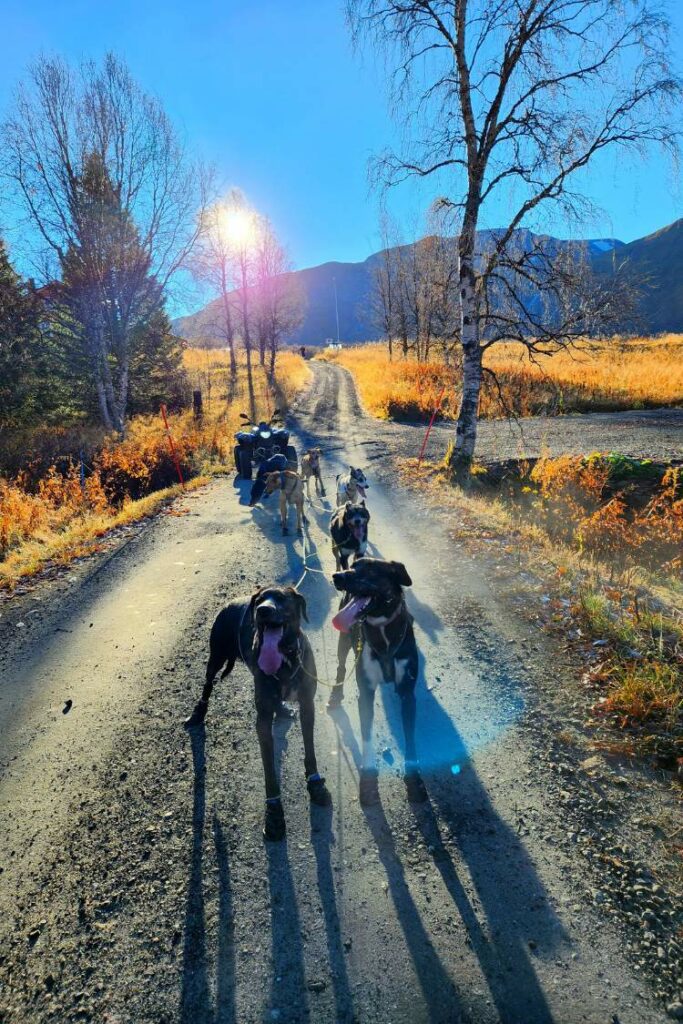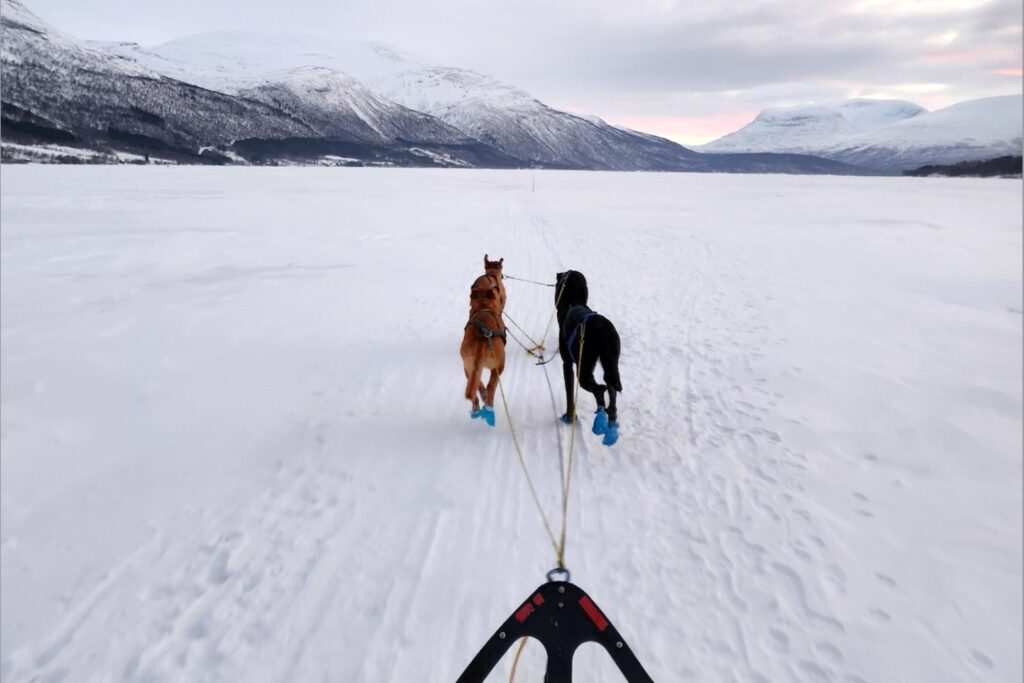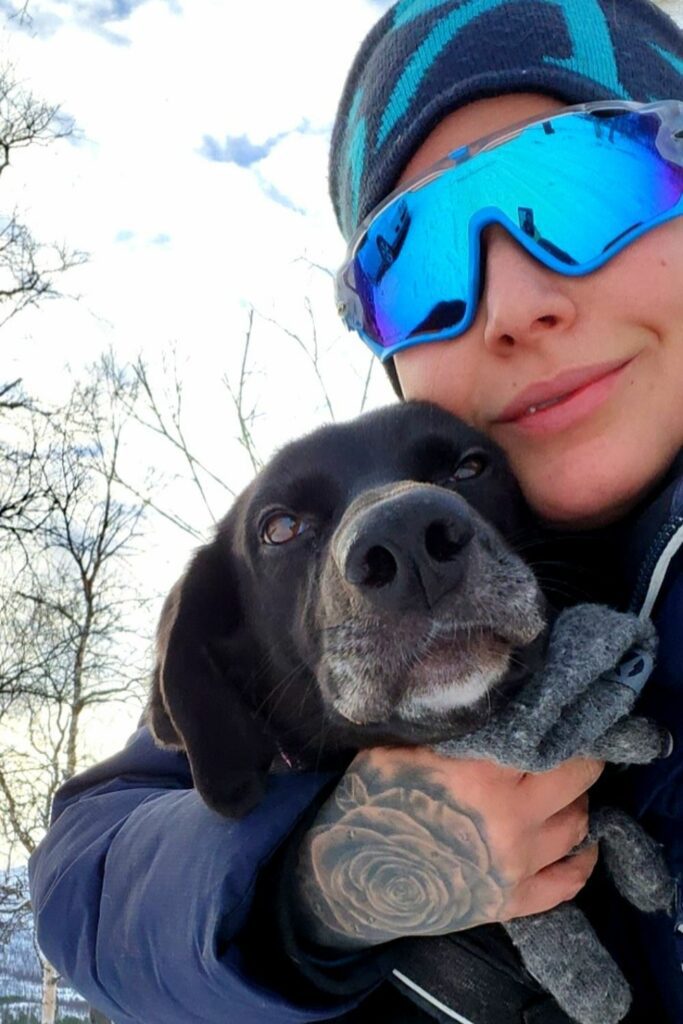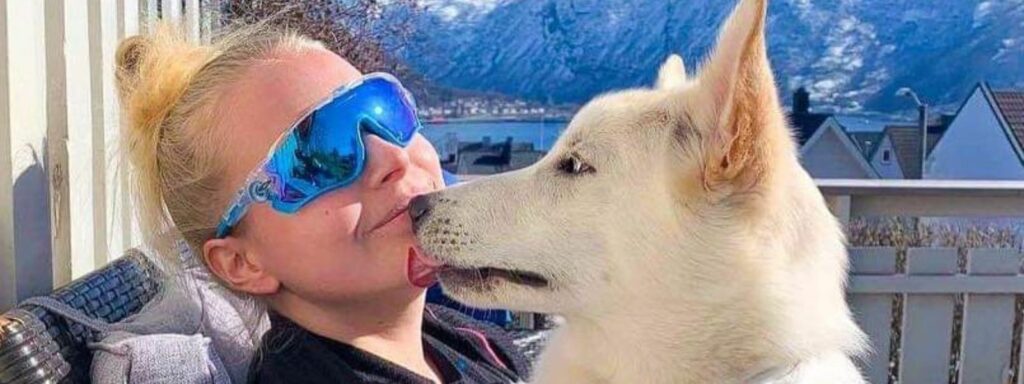Dog sledder fuels up with Nala Health
 Synne Hemsen Berg
Synne Hemsen Berg
My name is Sofi Nyström and I am from a small village called Köping in southern Sweden. In February 2018, I decided to move to Narvik, to follow my dream to learn the art of dog sledding and have my own team. My journey started with a husky, and today I have 7 adult dogs and 7 puppies. I also built my own kennel for the dogs.
My dogs have been my medicine and therapy
Sofi Nyström

Thriving on insect-based dog food
The The best thing about dog sledding is to see how much the dogs love it. It’s also fun to see how much they can achieve with proper training, healthy food and good leadership. Despite feeding my dogs with a well-known dog food brand, they struggled with diarrhoea and digestive issues. Therefore I contacted Nala Health to try their food. Now they eat Nala Health dog food and are doing well.
The dogs are family
I had a difficult time mentally and struggled with anxiety and depression. Being outdoors in beautiful, untouched nature and working with my dogs has been my medicine and therapy. My dogs are my family, and they mean everything to me. They are always happy and give me so much love.
My dog team is made up of 3 dogs from my friend and 5 times world champion, Hege Ingebrigtsen: Faxio, Proxit and Primax. The other 3 are siblings; Skrillex, Extra and Lexi. I have also bred my own dogs for my future team. The dogs are bred for agility and speed and are a mix of the breeds Alaskan husky, Vorsteh and Pointer. The dogs and I train to compete in sprints and middle distance.

Dog sledding and nature experiences
In the old days, sled dogs or draft dogs were working dogs that lived in polar and subpolar conditions. Sled dogs are an important part of the Inuit culture in Greenland. Explorers such as Nansen, Amundsen and Ingstad also used sled dogs on their expeditions. Sled dogs have fur that can withstand cold weather and it is perfect for regulating the dog’s body temperature. Typical polar dog breeds are:
- Greenland dog
- Alaskan Malamute
- Siberian Husky

Dog sledding as a sport
Today, sled dogs are often used in competitions, both long-distance and shorter sprints. The most common distances are from 5 km to 500 km.
Sofi Nystrøm and her dogs take part in short-distance races where lighter sleds and faster dogs are used. The most common breed for this distance is a mix of greyhound, vorsteher and pointer.
Dog sledding requires a lot of training and good planning, but first and foremost you have to takecare of the dogs’ health and well-being. Sled dogs are top athletes, and nutritionally they need a lot of protein (30-40%) and fat (50%) during the competition; they can eat up to 10,000 calories per day (a normal dog eats around 1,500 calories per day). Fat is the most important energy source. They also need functional carbohydrates for energy and fibre, as well as vitamins, minerals and trace elements. It is also important that the dogs get enough fluids, which is, often given in the form of warm soup.

